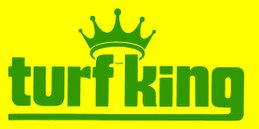Some equipment companies and some lawn companies tout the benefits of slit seeding as a way to overseed thin and bare spots in the lawn.
We had some work done in our lawn. A trench was dug and filled in. As a result, there was a patch of lawn that was nothing but mud.
The soil was packed pretty hard there with the rain and with tamping it down to reduce settling.
We had some work done in our lawn. A trench was dug and filled in. As a result, there was a patch of lawn that was nothing but mud.
The soil was packed pretty hard there with the rain and with tamping it down to reduce settling.
So the one thing that was handy was a spade.
So I took the spade and sunk it an inch or two into the hard clay, sprinkles some grass seed and kept it moist by watering twice a day.
You can see in this photo above where the seeds have started to sprout in the straight lines made by the spade. There are also some holes made a few days later with a grass stitcher. A grass stitcher is a tool that makes holes in the soil.
You can see that the seed in the slits is coming up nicely, with the seed in the grass stitcher holes just a bit behind.
Here the seeds in the slits are much more developed- but they are very obviously in the slit made by the spade.
For small area, making a few slits in the soil with a spade or shovel is one way to keep the seeds from drying out and therefore more likely to germinate well. Not well suited to large areas but an easy way to remedy small areas with little or no grass.
For large areas the easiest is to aerate and then overseed.




